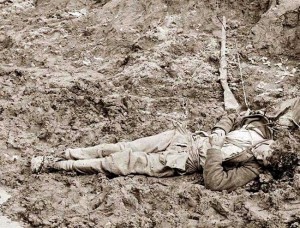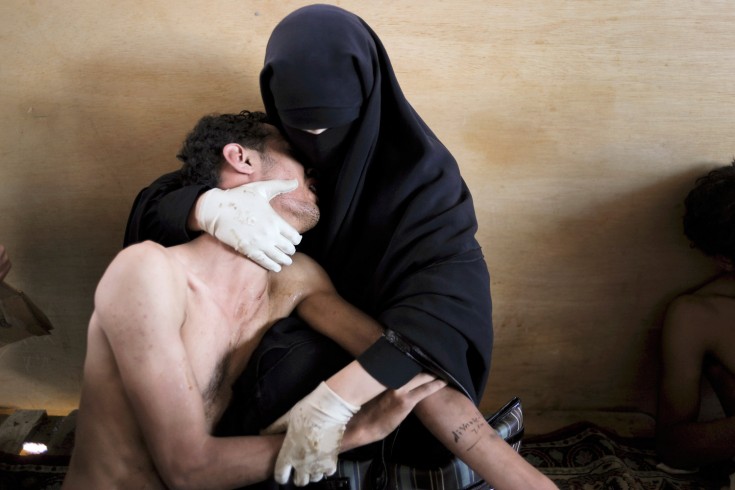Aranda’s wonderful photograph follows Gene Smith’s “Minimata,” Robert Capa’s “Spanish Republican” and Eddie Adams’ “Viet Cong Execution” as the kind of photograph that sums up an era and, in the past, could change history.
As early as the American Civil War, images stuck in people’s minds and hugely affected politics. Many of those images are so iconic that we still see them today and even define the war by the still images.  Lewis Heine’s images of sweat shops and the amazing photography of the American depression have the same defining quality for American views of child labor and poverty.
Lewis Heine’s images of sweat shops and the amazing photography of the American depression have the same defining quality for American views of child labor and poverty.
It seems to me that the web is failing to empower this effect of photography. Today’s images, communicated virally by the intertubes  ought to be very powerful. So far, however, this does not seem to be happening. I suspect that the reason is money. Aranda, Smith, Capa, Adams … all of these wre, and Aranda is .. employed by print media that had a cash incentive to use and promote great art. Today’s images, even the amzing images that one can see at Magnum, are transient … up for a day or a few minutes. The profit and credit become so diluted that there is not enough money to pay even the modest wages of dedicated photo journalists.
ought to be very powerful. So far, however, this does not seem to be happening. I suspect that the reason is money. Aranda, Smith, Capa, Adams … all of these wre, and Aranda is .. employed by print media that had a cash incentive to use and promote great art. Today’s images, even the amzing images that one can see at Magnum, are transient … up for a day or a few minutes. The profit and credit become so diluted that there is not enough money to pay even the modest wages of dedicated photo journalists.
 That profession seems to be turning to videography. Dan Chung, a photojournalist at the Guardian and Reuters, makes similar comments. “Photojournalism as a profession has taken a bit of a nosedive in recent years. … I’m not immune to the longer-term trend, which is pretty desperate if you’re talking about make a living….’A lot of it has to do with what editors are asking photographers to do and my impression is that editors are basically asking for video more in the US and Asia than they are in the UK. I’ve been running DSLR video workshops in the UK now for a year and they’re always packed
That profession seems to be turning to videography. Dan Chung, a photojournalist at the Guardian and Reuters, makes similar comments. “Photojournalism as a profession has taken a bit of a nosedive in recent years. … I’m not immune to the longer-term trend, which is pretty desperate if you’re talking about make a living….’A lot of it has to do with what editors are asking photographers to do and my impression is that editors are basically asking for video more in the US and Asia than they are in the UK. I’ve been running DSLR video workshops in the UK now for a year and they’re always packed out, so there’s obviously an appetite there, but it’s early days.’
out, so there’s obviously an appetite there, but it’s early days.’
